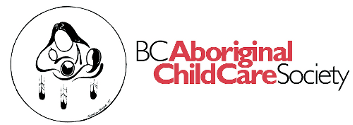A process for creating the Aboriginal children's health and well-being measure (ACHWM) (Record no. 1222)
[ view plain ]
| 000 -LEADER | |
|---|---|
| fixed length control field | 02864nab a22002777a 4500 |
| 003 - CONTROL NUMBER IDENTIFIER | |
| control field | BCACCS |
| 005 - DATE AND TIME OF LATEST TRANSACTION | |
| control field | 20161105091252.0 |
| 008 - FIXED-LENGTH DATA ELEMENTS--GENERAL INFORMATION | |
| fixed length control field | 140918s2013 |||||s|||| 000 0 eng d |
| 040 ## - CATALOGING SOURCE | |
| Original cataloging agency | BCACCS |
| 100 1# - MAIN ENTRY--PERSONAL NAME | |
| Personal name | Young, Nancy |
| 9 (RLIN) | 414 |
| 245 12 - TITLE STATEMENT | |
| Title | A process for creating the Aboriginal children's health and well-being measure (ACHWM) |
| Statement of responsibility, etc. | Nancy L. Young, Mary Jo Wabano, Tricia A. Burke, Stephen D. Ritchie, Debbie Mishibinijima, Rita G. Corbiere |
| Medium | [electronic resource] / |
| 260 ## - PUBLICATION, DISTRIBUTION, ETC. (IMPRINT) | |
| Date of publication, distribution, etc. | 2014. |
| 300 ## - PHYSICAL DESCRIPTION | |
| Extent | 1 online resource (p. 136–141) : |
| Other physical details | digital, PDF file. |
| 520 3# - SUMMARY, ETC. | |
| Summary, etc. | OBJECTIVES: The purpose of this study was to identify concepts of health and well-being important to Aboriginal children and youth. These concepts were necessary for the development of a culturally appropriate measure of health.<br/><br/>METHODS: We completed 4 community consultation sessions, 4 advisory committee meetings, and 6 full-day focus groups within the Wikwemikong Unceded Indian Reserve. The focus groups engaged Aboriginal children and youth via relevant cultural teachings, a photography exercise combined with a community bicycling tour, and detailed discussions of health and well-being using photovoice. The process was guided by a conceptual model: the Medicine Wheel. The participants placed their photos on a wall mural and identified their most important concepts. These concepts were synthesized through expert consensus into items and reviewed by the broader community.<br/><br/>RESULTS: The participants ranged in age from 8.2 to 17.7 years (mean age=12.3). Through innovative methods, children and youth identified 206 concepts representing the 4 quadrants of the Medicine Wheel: emotional, spiritual, physical and mental. These concepts were refocused, in collaboration with the community, to create a new 60-item measure of health and well-being that was primarily positive in focus.<br/><br/>CONCLUSION: This study demonstrates the success of implementing a unique process of photovoice in combination with bicycling and informed by an Aboriginal framework. The results confirm the distinct conceptualization of health and well-being in this population and underscore the necessity for a culturally appropriate measure. This study also produced a first draft of the Aboriginal Children’s Health and Well-being Measure (ACHWM). |
| 650 #0 - SUBJECT ADDED ENTRY--TOPICAL TERM | |
| Topical term or geographic name as entry element | Public health |
| 9 (RLIN) | 223 |
| Geographic subdivision | Canada. |
| 650 #0 - SUBJECT ADDED ENTRY--TOPICAL TERM | |
| 9 (RLIN) | 286 |
| Topical term or geographic name as entry element | Children |
| General subdivision | Health aspects |
| 650 #7 - SUBJECT ADDED ENTRY--TOPICAL TERM | |
| Topical term or geographic name as entry element | Mental health and well-being |
| Source of heading or term | BCACCS |
| 9 (RLIN) | 216 |
| 700 1# - ADDED ENTRY--PERSONAL NAME | |
| Personal name | Wabano, Mary Jo |
| 9 (RLIN) | 415 |
| 700 1# - ADDED ENTRY--PERSONAL NAME | |
| Personal name | Burke, Trisha A. |
| 9 (RLIN) | 416 |
| 700 1# - ADDED ENTRY--PERSONAL NAME | |
| Personal name | Ritchie, Stephen D. |
| 9 (RLIN) | 417 |
| 700 1# - ADDED ENTRY--PERSONAL NAME | |
| Personal name | Mishibinijima, Debbie |
| 9 (RLIN) | 418 |
| 700 1# - ADDED ENTRY--PERSONAL NAME | |
| Personal name | Corbiere, Rita G. |
| 9 (RLIN) | 419 |
| 773 0# - HOST ITEM ENTRY | |
| Title | Canadian Journal of Public Health Public Health |
| Related parts | Vol. 104, no. 2 (2013), p. 136-141 |
| 856 ## - ELECTRONIC LOCATION AND ACCESS | |
| Uniform Resource Identifier | http://journal.cpha.ca/index.php/cjph/article/viewFile/3636/2776 |
| Public note | Full text |
| 942 ## - ADDED ENTRY ELEMENTS (KOHA) | |
| Source of classification or shelving scheme | |
| ARTICLE | Journal Article |
No items available.
